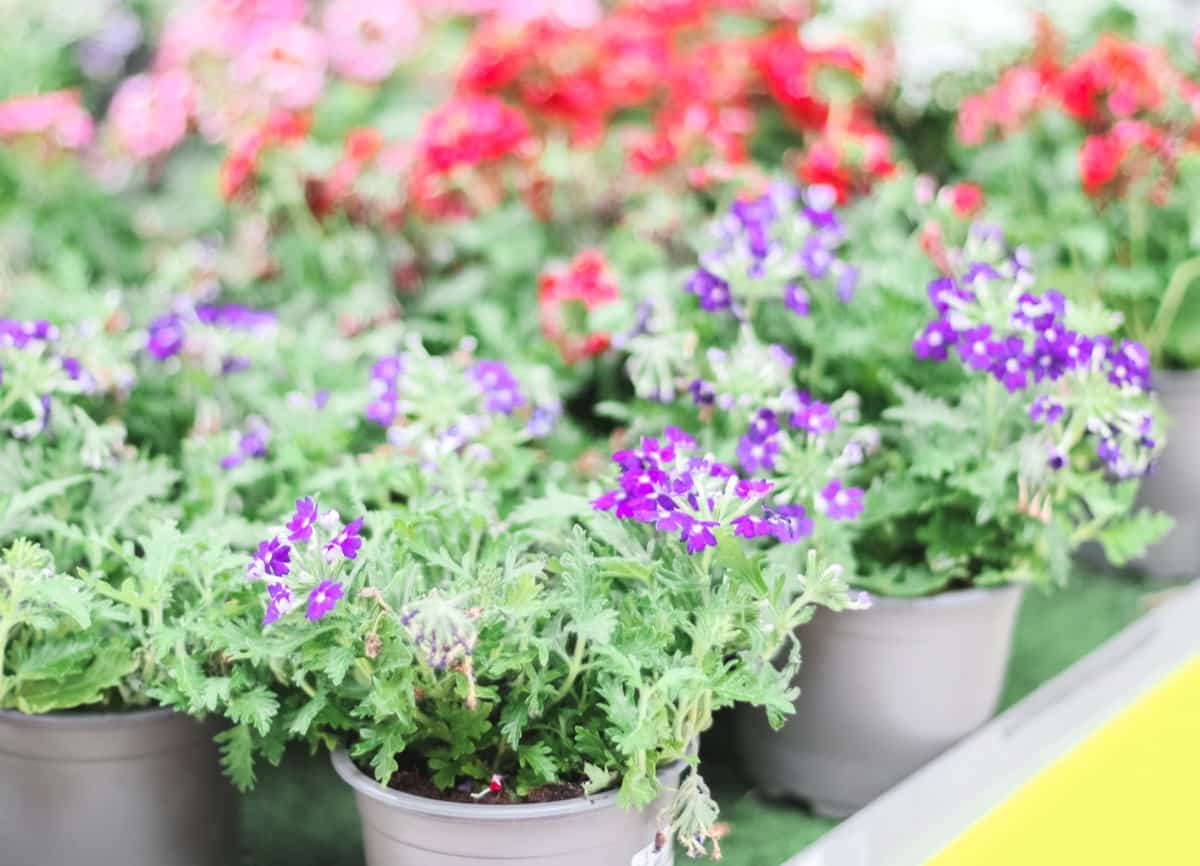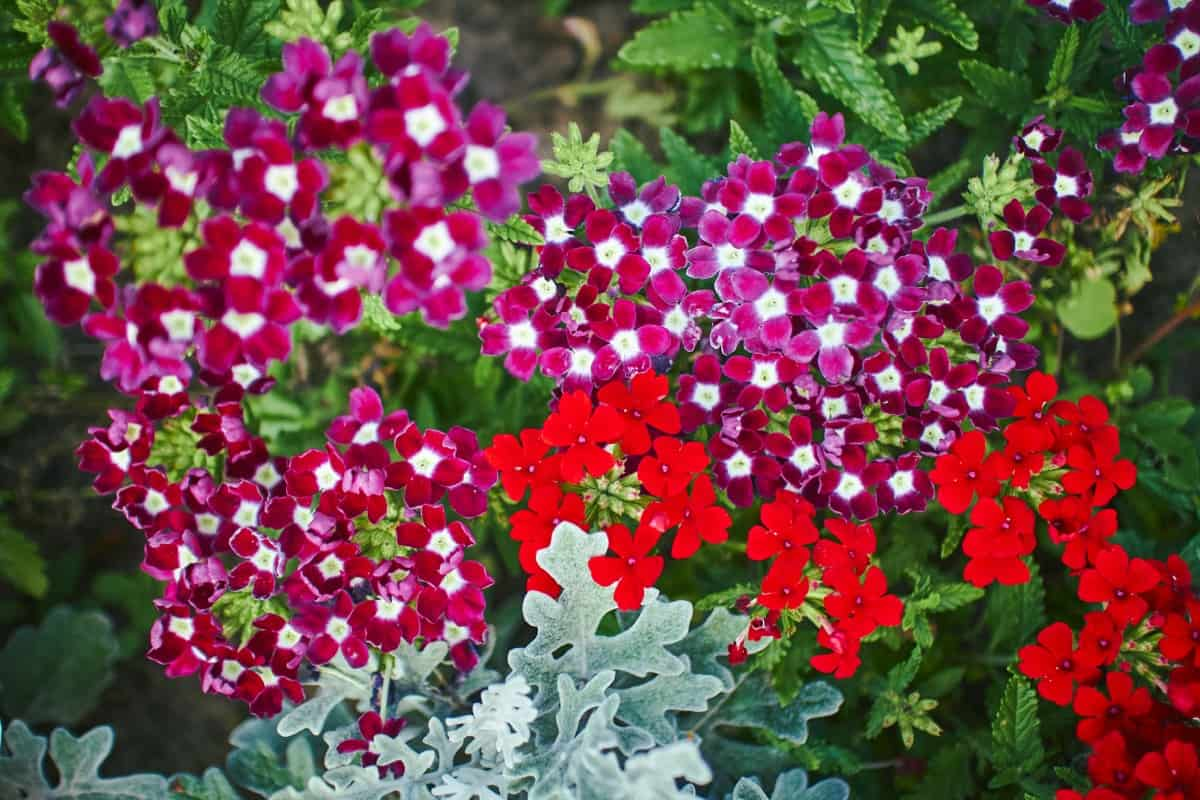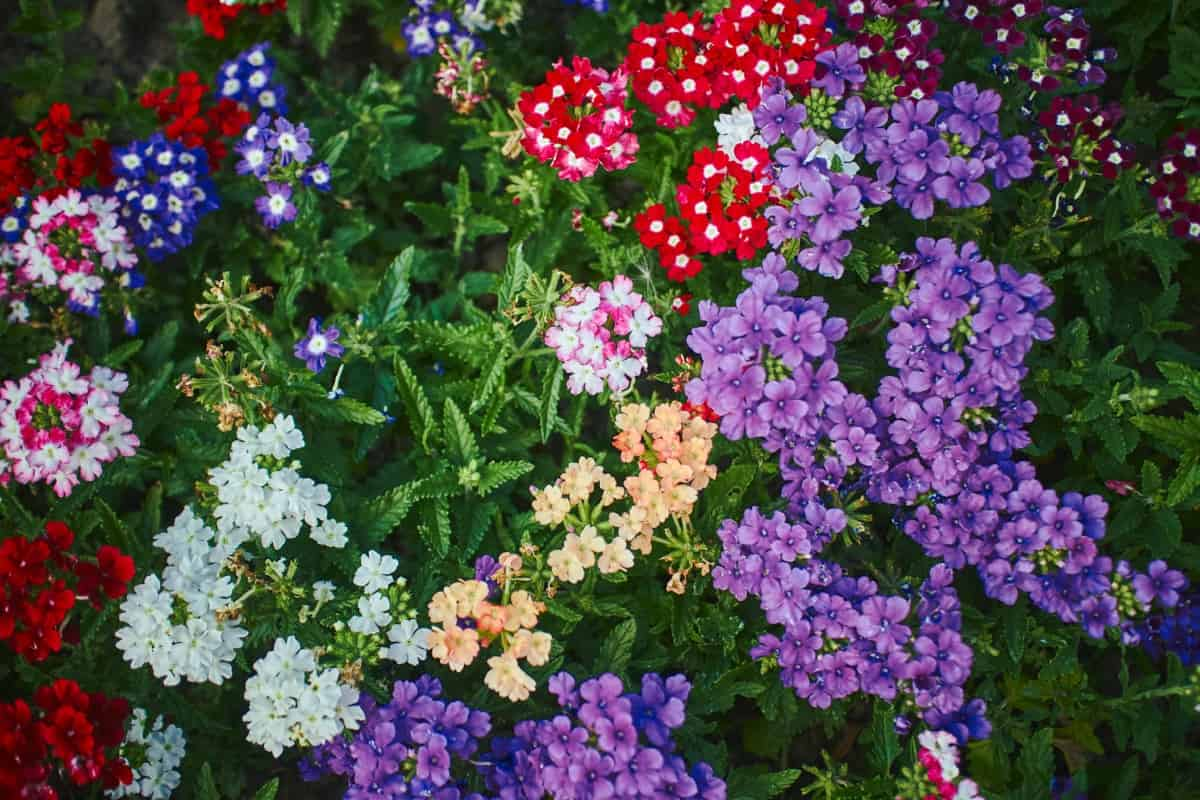Verbena is a charming addition to any garden with its bright hues and delicate clusters. This versatile plant boasts a vibrant visual appeal and is surprisingly easy to cultivate, even for novice gardeners. Its hardiness, tolerance for various conditions, and propensity to spread make verbena a beloved choice among gardening enthusiasts worldwide. This guide aims to provide a comprehensive, step-by-step understanding of successfully growing and caring for this beautiful plant.

How to Grow and Care for Verbena
Step-by-step Guide to Growing Verbena From Seeds
The journey of growing verbena begins with its seeds. Proper preparation and understanding of the seeding process ensure healthy growth. Start by choosing high-quality verbena seeds from a reliable supplier. Next, sow these seeds in a well-draining seed starter mix roughly eight weeks before the last expected frost date.
Put the seed tray in a warm, well-lit spot with a temperature of approximately 70 degrees Fahrenheit. A heat mat can be used to maintain the ideal temperature. Water the seeds lightly and consistently, never letting the soil dry. Once the seeds have germinated, which usually takes 14 to 28 days, they are ready to be transplanted to their permanent location, either in the ground or in pots.
Choosing the Right Location and Soil for Verbena Plants
Location is critical when it comes to growing verbena. These plants prefer a sunny spot, receiving at least six hours of sunlight daily. They can tolerate partial shade but perform best in full sun. When it comes to soil, verbena prefers well-drained, moderately fertile soil. They can handle bad soil, but they thrive in well-lit, loamy, or sandy soil with a neutral pH for beautiful flowers. When caring for verbena in pots, ensure the containers have sufficient drainage holes to prevent waterlogging.
Essential Watering Techniques for Healthy Verbena Growth
Understanding verbena’s water requirements is crucial for their survival and overall health. Verbena prefers the soil to be moist but not waterlogged. Overwatering can lead to root rot, one of the primary verbena problems. So, make sure to water the plant well and let the soil’s top inch dry before watering again. Growing verbena in pots might require more frequent watering than those planted in the ground, as container plants tend to dry out faster.
Optimal Sunlight Requirements for Vibrant Verbena Blooms
Verbena thrives in full sun exposure. While the plants can tolerate shade, a sunny location is crucial for vibrant, abundant blooms. Aim for at least six hours of sunlight each day for optimal flowering. Verbena’s sun-loving nature can withstand high summer temperatures, enhancing its appeal as a garden staple.
In case you missed it: How to Grow and Care for Rose Plants: Propagation and Planting Instructions for Best Blooms

Feeding and Fertilizing Tips for Robust Verbena Plants
Even though verbena can handle less-than-ideal soil conditions, regular feeding can maximize its growth and flowering potential. Use a balanced slow-release fertilizer at the beginning of the growing season. Make sure to follow the manufacturer’s instructions for application rates and timings. Additionally, supplement this with a water-soluble fertilizer every four weeks to ensure nutrient-rich growth.
Pruning and Deadheading Strategies to Promote Verbena Flowering
Deadheading spent blooms is a sure way to extend the blooming period and keep your verbena looking its best. Removing the faded flowers encourages the plant to produce more blooms than setting seeds. How to deadhead verbena? Simply snip off the faded flowers just below the flower head. Besides deadheading, regular pruning helps to maintain a compact shape and prevent legginess. It also encourages bushier growth and increased flower production.
Protecting Verbena from Common Pests and Diseases
While verbena is a relatively hardy plant, it is not completely immune to pests and diseases. Aphids, spider mites, and powdery mildew are common verbena problems gardeners may encounter. Regular inspection of the plant can help detect these issues early on. For aphids and spider mites, a strong spray of water or an application of insecticidal soap can help manage the pests. Powdery mildew, a fungal disease, can be controlled by improving air circulation around the plants and applying a fungicide if necessary. Regular deadheading and proper watering practices can also minimize these issues.
Overwintering Verbena for Continued Growth in Colder Climates
One of the striking features of verbena is its ability to withstand winter temperatures. However, in regions with harsh winters, steps must be taken to protect the plant for its survival and continued growth in the next season. You can treat verbena as an annual and start anew with seeds each spring or overwinter it. To overwinter verbena, reduce watering in the fall and mulch around the base of the plant. You can also dig up the plants, place them in pots, and keep them indoors in a cool, bright location until spring arrives.
Creating a Stunning Verbena Container Garden
Verbena makes for an impressive display when grown in containers. The cascading habit of the trailing varieties of verbena can create a stunning “spilling over” effect when planted in pots or hanging baskets. When caring for verbena in pots, ensure the container is large enough to accommodate its vigorous growth and use a high-quality potting mix to provide good drainage.
What to plant with verbena in pots? Pairing it with other sun-loving, drought-tolerant plants like petunias or geraniums can create a striking mixed container garden. Regular watering and feeding are crucial for verbena’s continued health and vigor in containers.
Attracting Pollinators with Verbena in Your Garden
The vibrant, nectar-rich verbena blooms are irresistible to various pollinators. Planting verbena in your garden is a surefire way to attract bees, butterflies, and even hummingbirds. This not only aids in pollination and contributes to local ecosystems but also adds a lively, dynamic component to your garden.
In case you missed it: How to Grow and Care for Tulips: Planting Instructions

Conclusion
Verbena is a versatile, vibrant, and relatively easy-to-grow plant that can enrich your garden with its lush blooms. Understanding its needs concerning location, watering, sunlight, feeding, and pruning can help achieve a healthy, thriving plant. It’s also vital to be aware of the common pests and diseases that can affect verbena and the steps to prevent or manage them. With this comprehensive guide, you’re now ready to cultivate your verbena plant, whether it’s in a wide-open garden, in a mixed container display, or even in a compact pot on your balcony. The joy of watching these beautiful blooms unfold will surely make the effort worthwhile.
- Feed Your Flock for Less: Top 10 Tips to Save on Chicken Feed
- Ultimate Guide to Ossabaw Island Hog: Breeding, Raising, Diet, and Care
- Hatching Answers: The Top 10 Reasons Your Chickens Aren’t Laying Eggs
- Eggs and Economics: Breaking Down the Cost of Raising Backyard Chickens
- Defend Your Greens: Proven Methods to Keep Iguanas Out of Your Garden
- Ultimate Guide to Cinnamon Queen Chicken: A Comprehensive Guide for Beginners
- Ultimate Guide to California Tan Chicken: Breeding, Raising, Diet, Egg-Production and Care
- Ultimate Guide to Marsh Daisy Chicken: Breeding, Raising, Diet, and Care
- 10 Types of Chicken Farming Businesses You Can Start for Profits